Flavor characteristics of Sidamo Flower Kui soe Coffee Bean comparison of Sakura 3.0 4.05.0 and 6.0 Coffee Taste
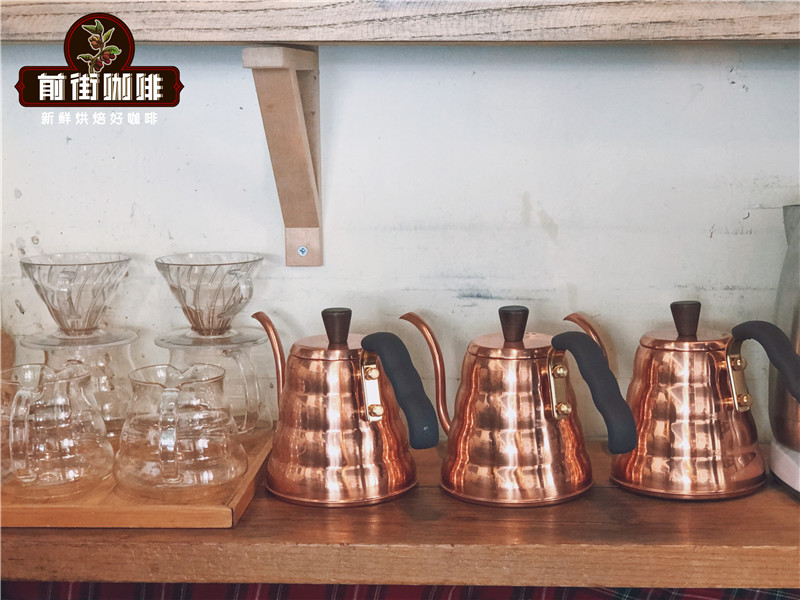
When recommending Ethiopian boutique coffee beans, Qianjie asks guests, "would you like a brighter, sour Esser or a juicy one?" When everyone is often obsessed with drinking Essex beans, the baristas on the front street will make use of the citrus-like bright and sour flavor of the Yega Chuefei coffee producing area and the fruity and juicy flavor of the Sidamo producing area. let the guests choose the flavor they want to drink as soon as possible. Qianjie Coffee in this article is located in the Guji producing area, which originally belongs to the Sidamo producing area, but has been independent into a new producing area by the Ethiopian Commodity Exchange (ECX) in 2010 because of its outstanding flavor.
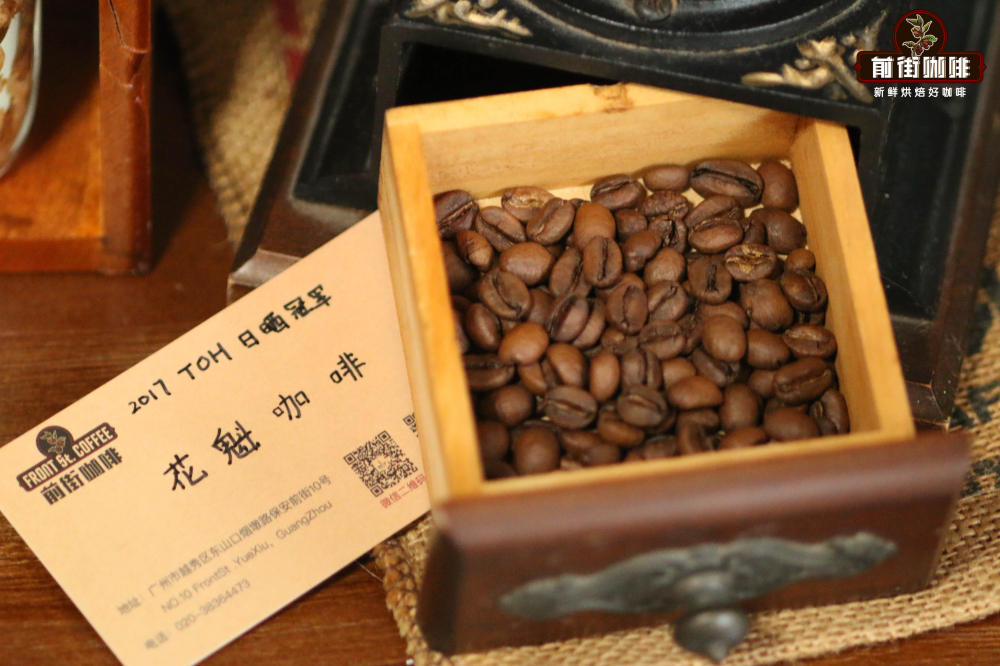
When it comes to Guji producing areas, the most famous is Sakui coffee beans. Sakuran won the championship in 2017 for its outstanding strawberry cream flavor in TOH (Ethiopia National Taste of Harvest Competition), which is well-deserved. Through the baking cup test in Qianjie, it was found that there was an obvious difference between the flavor of Huakui coffee beans in 2.0, 3.0 or 4.0 and the original 2017 coffee beans, especially in the front street of Sakui 3.1 coffee beans. I even think that the flavor of Sakui 3.1 is a little close to that of Rosa. In 2020, as the fourth year of this coffee bean, the area of its production area has expanded several times, coupled with more scientific planting management, the flavor of Sakui 4.0 is even better, and a kind of Sakui 4.0 coffee bean has been bought and put on the front street. Through cup testing of 4.0 coffee beans, it is found that its flavor is similar to that of 2017 coffee beans, but its mellow thickness and afterrhyme are not as good as those of 2017 coffee beans.
Guji producing area
The Guji producing area, which once belonged to the Sidamo producing area, has been independent into a new producing area by the Ethiopian Commodity Exchange (ECX) in 2010. The Guji producing area, located in the southeast of Yejasuffi, is an area with complex topographical changes such as towering mountains, valleys and plains. The geology of this area belongs to the nutrient-rich black soil (Vertisol), the depth of the soil is nearly two meters, and the average elevation is more than 1800 meters. The significant temperature difference between day and night created by geographical characteristics makes the local area have various local conditions for producing high-quality coffee.
It is located in GUJI, the largest coffee producing area in Ethiopia, and the administration is subordinate to the state of Oromia. The west of Hambella is across the mountain from kochore. The two producing areas are separated by highlands with an elevation of 3200 meters and a width of about 30 kilometers, and are connected with the shakiso,Uraga and Kerchaz producing areas of Guji in the east and south, respectively. It is the highest coffee producing area in Ethiopia (Harrar is the main producing area in Ethiopia).
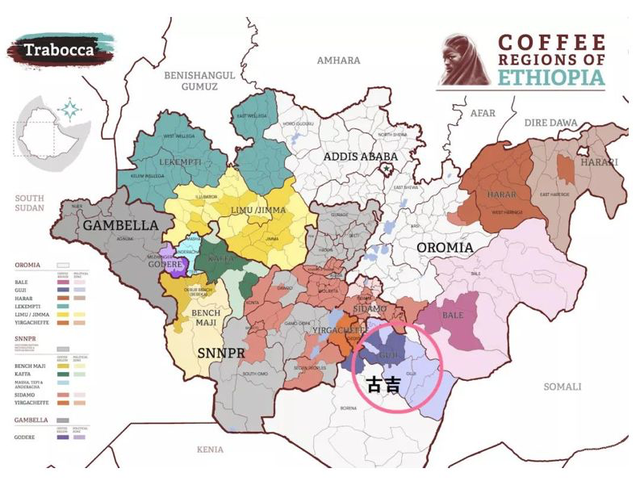
Why is it called "Sakuran"?
Sakuran beans are from Hambella, located in Guji, Ethiopia's largest coffee producing region, and are administered by the state of Oromia. The west of Humbera faces the mountains of Yega Fichier. The two producing areas are separated by a highland with an elevation of 3200 meters and a width of about 30 kilometers, and are bordered by Shakiso, Uraja and Kolasha in Guji in the east and south, respectively. It is the highest coffee producing area in Ethiopia. Huakui coffee beans were originally called Humbela, and one of them was named by domestic raw bean merchants.
In the Humbera Mountains, villagers live in mountains 2000 meters above sea level, with no roads and electricity, and government-supported faucets at the entrance of the village are the only source of drinking water for the whole village. Although the villagers have to be huddled in the same thatched hut with their livestock, the air here is free and happy. Local children will ride a little donkey to the village to fetch water. They are always cheering and shyly exchanging corn and avocados from nowhere for candy from the world outside the mountains. In the sun field, the curry farmers who turn the red fruit of coffee always sing cheerful songs barefoot and smile. It is precisely under the hand selection of these simple villagers that our favorite Huakui coffee beans have come into the cup.
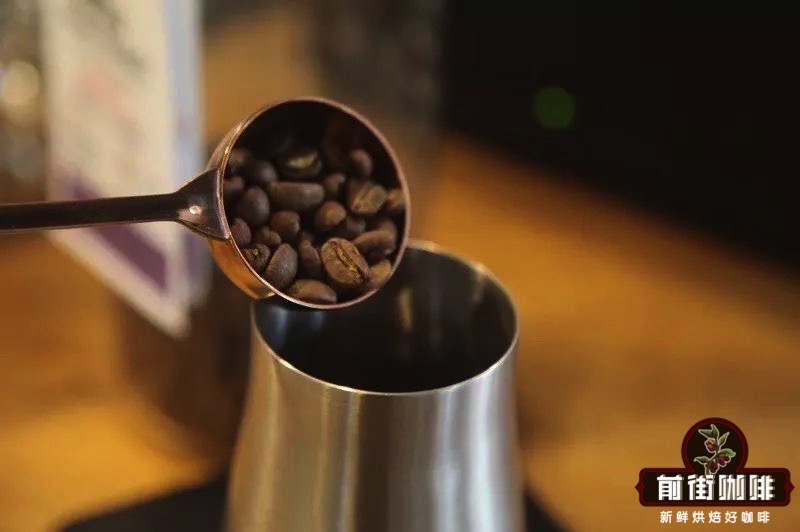
At present, there are about 20 processing plants of various sizes in Hambella producing areas. In 2017, a sun-dried bean from DW's "Buku Abel" processing plant won the Ethiopia National Taste of Harvest Competition championship, and Chinese raw bean importers named the bean Sakuran, which at that time had a strong strawberry and cream aroma. Subsequently, DW added processing plants in Dimtu, the core production area of Hambella, namely "Buku Abel", "Buku Saysay", "Haro Soresa" and "Tirtiro Goye", with an annual output of about 1100 tons of coffee. In all these estates and processing plants, strictly speaking, only the sun-dried coffee beans from the "Buku Abel" processing plant can be called "Sakuran coffee beans". This is why Sakui 2.0, Sakuran 3.0 and Sakui 3.1 appeared in 2018 and 2019, respectively. It was named 4.0 in 2020 and 5.0 in 21. In short, the area expanded, and then used Sakuran's fame as Sakui X.0.
The difference between Sakui coffee beans in 2017 and those in later seasons.
Now that the original Sakuran is included in Sakuran 2.0 and Sakuri 3.0, can Sakuran still be found? In 1919, the processing plant had mixed all the beans from small producing areas, and Qianjie Coffee found that the flavor of the beans in the above two-year batches was very close to that of the original Sakuran, but the mellow thickness and afterrhyme were not as good as those of the original Sakui in 2017. but surprisingly, Qianjie can sometimes identify exactly the same small beans as the original Sakui batches from these two batches of raw beans. There are some very small varieties of Sakui coffee beans in 2017, which is the main source of the aroma of Sakui, so we will also call it Xiaogui which contains the old variety of Sakui. Since the beginning of 20 years, the processing plant has dealt with Xiao Grain Sakuran independently and sold it at the same time as Sakuran X.0 in the same year.
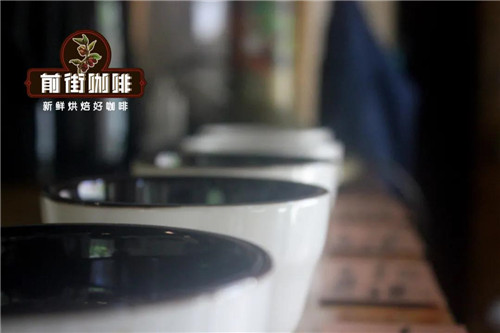
As for Huakui 3.1, during the cup test in Qianjie, it was found that it was far from the original flavor of Sakui, but more close to the flavor of rose summer (not referring to the rose summer of Panama, but similar to the rose summer flavor of Rose Summer Village. These two kinds of beans are actually completely different styles of beans), we also confirmed this change from raw bean merchants. It is rare for beans with multiple flavors to appear in the same bean in the same year. If you understand the origin of Huakui, and then understand its development and changes after winning the championship, you will understand the reasons for the inconsistent flavor. Similarly, according to the flavor of the old Sakuran, Sakui 4.0 is not the same style, but the sweetness and aroma of 4.0 is better than 3.0.
Sun treatment of Huakui coffee beans
In the annual coffee harvest and treatment season (December-January), coffee picked by farmers must have a sugar content of more than 30 before they can start sun treatment. In the first two days of the sun, it is necessary to ensure the humidity of the coffee red fruit, so that its fructose is fully fermented. At the same time, the geographical location of the high altitude makes the temperature of the treatment plant drop to about 12 degrees Celsius at night, without excessive fermentation because of the high temperature. When the temperature is relatively high at noon, it will be shielded in time to prevent sunburn of coffee red fruit. In order to prevent sudden rain at night, it will be wrapped in thick plastic sheeting.
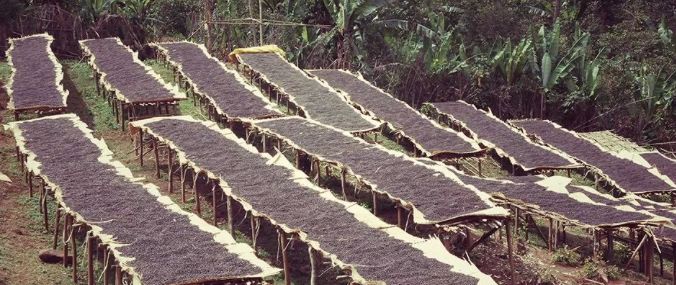
In this way, the red coffee fruit is fermented and dehydrated at a lower temperature. After 18 days of sun treatment, the moisture content of raw coffee beans decreased to about 13%, stopped the sun treatment, put it in sacks, put it into the warehouse under the natural conditions of 12-22 degrees Celsius and 45-55% humidity, and raised raw beans and further dehydration for about 50 days. When the moisture content of raw beans reaches about 11%, it is transported to the treatment plant for shelling and screening. Qianjie believes that in this way, Yan E selects red coffee fruits with high sugar content for the sun, which will further make Huakui coffee beans more sweet and more juicy.
The winning situation of Huakui coffee beans
2016 / 2017 Ethiopia National Taste of Harvest Competition champion
2017 Regional Africa Taste of Harvest Competition runner-up
Introduction of Huakui Coffee beans from Qianjie Coffee
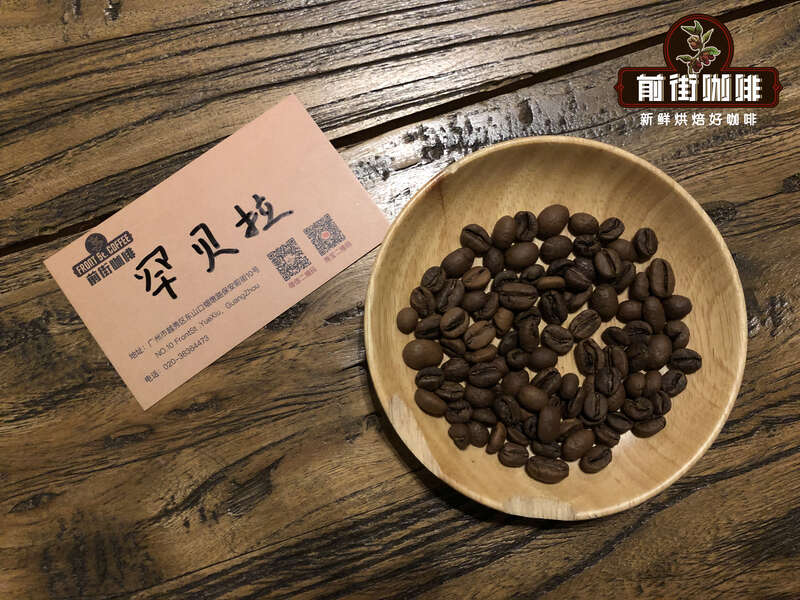
Qianjie Coffee-Saizhuakui G1
Producing area: Gujinhambela
Processing plant: Buku Able
Altitude: 2250-2350 m
Variety: native species
Grade: G1
Treatment: insolation
Flavor: strawberry, passion fruit, berry, pineapple, cream, nut
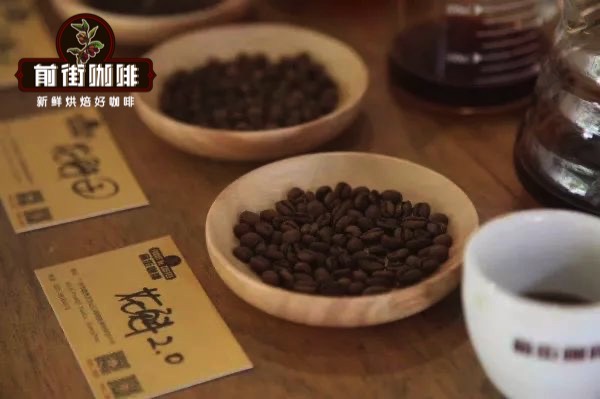
Qianjie Coffee-Ethiopia Sakuran 2.0
Producing area: Gujinhambela
Processing plant: Goro processing plant
Altitude: 2316 m
Variety: native species
Grade: G1
Treatment: insolation
Flavor: floral, tropical fruit, red wine, nuts
Compared with the previous batch of local hybrid "Sakui", "Sakui 2.0" has a more consistent bean shape and is handled more cleanly. After cup test and evaluation, "Huakui 2.0" not only has some rich and enchanting flower aroma, mellow red wine and tropical fruit flavor, but also adds some transparent sweet and sour fruit juice.
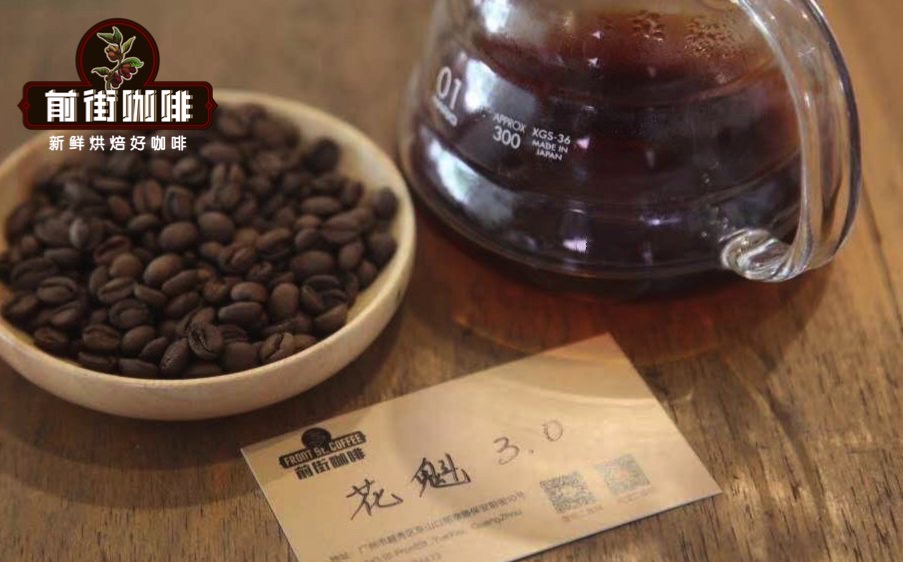
Front Street Coffee Ethiopian Flower 3.0
Production area: Gujihambella
Plant: Goro Plant
Altitude: 2300 m
Breed: Native species
Grade: G1
Treatment: Solarization
Flavor: Floral, berry, mango, pineapple, apricot
Oroquois 3.0 has higher flavor clarity than Oroquois 2.0.
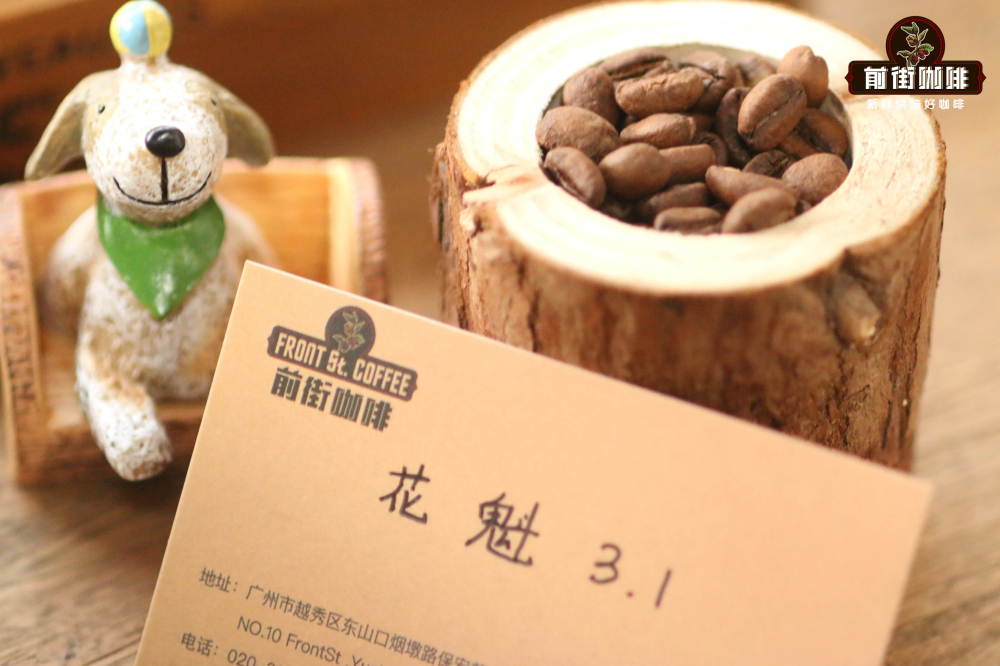
Qianjie Coffee Ethiopia Sakuran 3.1
Producing area: Gujinhambela
Treatment plant: Mansa Shantang treatment plant
Altitude: 2125 m
Variety: MANSA native species
Grade: G1
Treatment: insolation
Flavor: tropical fruit, citrus, caramel, cream
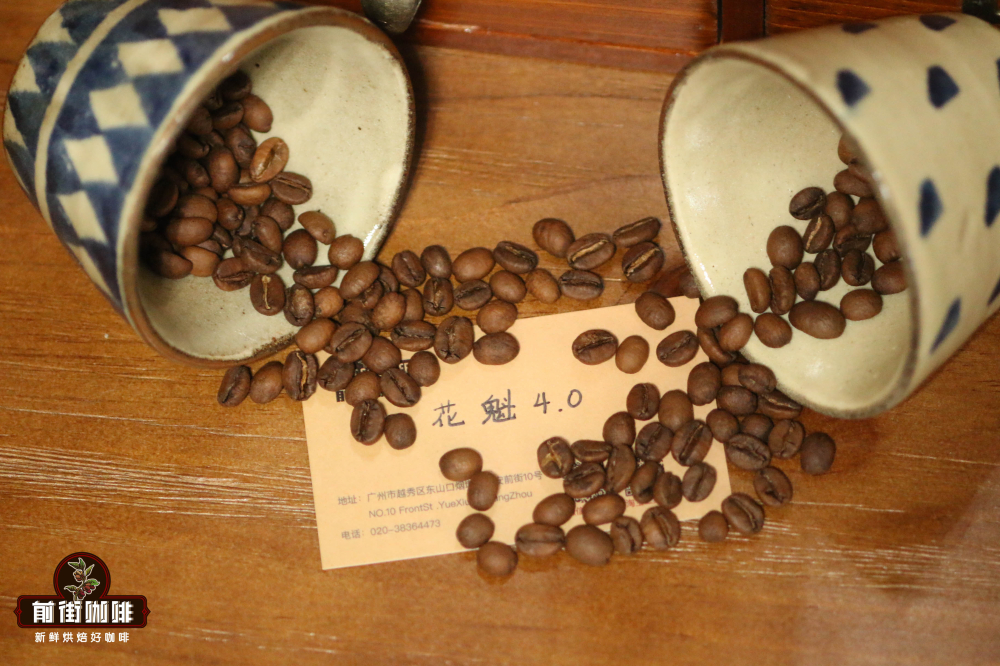
Qianjie Coffee Ethiopia Sakuran 4.0
Producing area: Gujinhambela
Processing plant: Buku Able
Altitude: 2350 m
Variety: Dega
Treatment: insolation
Batch: new batch in 2020
Flavor: rose, cream strawberry, citrus, passion fruit, oolong tea
Qianjie Coffee purchase this batch of Sakuran 4.0, compared to Sakui 3.0 bean type is smaller, this is because of the different varieties. Sakui 3.0 is a coffee bean native to Ethiopia, while Sakui 4.0 is a Dega variety.
What is the Dega variety?
This year, Ethiopia held the Cup of Excellence Cup for the first time ("CoE" for short), in which the top 28 coffee varieties were classified in unexpected detail. Dega, ranked 21, has two very different versions of its name. In one version, it is said that Dejia's name comes from a kind of sparkling wood, and the aroma of Dejia when baking is very similar to the burning aroma of this sparkling wood. Another version explains that Dejia "dega" is the Ethiopian root for "highlands and shady places", while Dejia often grows up at high altitudes. It is a pity that Dejia was not among the top 14 in this COE competition, so he did not collect the relevant flavor description. And this time Qianjie Coffee Sakuran 4.0 is the Dega variety of coffee beans.
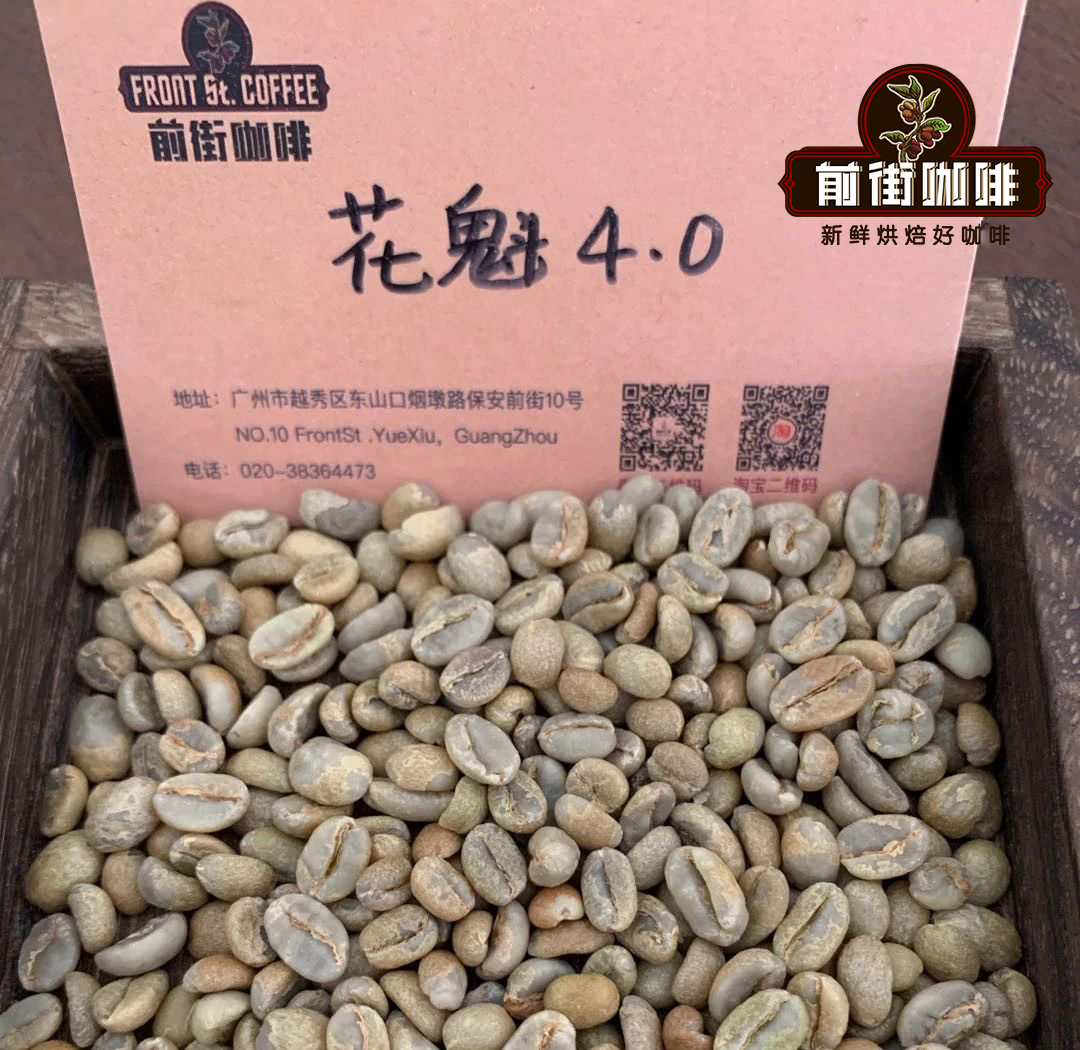
Qianjie Coffee Ethiopia Huakui 5.0 production area: Gujinbela processing Plant: Buku Able altitude: 2350 m Variety: local Native species treatment method: solarization batch: new batch in 2021
When tested in the cup in 2021, Huakui 5.0 can still find that the taste is different from that of last year. The 20-year-old variety of Huakui coffee has a deeper berry tone, while the 21-year-old coffee has more obvious acidity and brighter acidity.
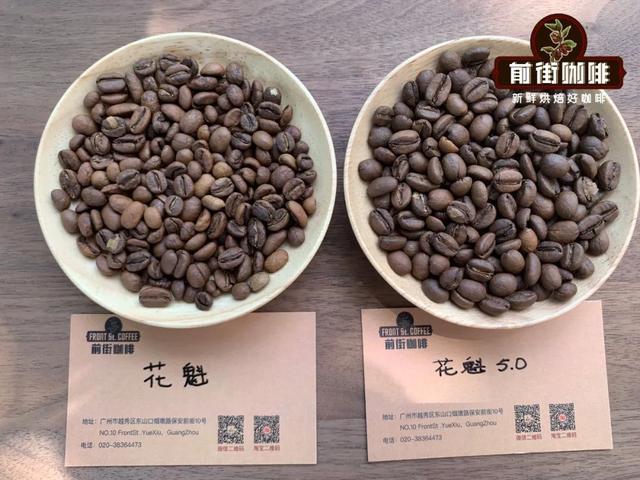
Qianjie Coffee production area in Ethiopia: Gujimbela processing Plant: Buku Able Independent selection altitude: 2350 m varieties: local native species treatment method: solarization batch: new batch in 2021
The flavor and aroma of Xiaogui are very familiar with those of Sakuran in 2017. At the beginning, Qianjie drank a flavor similar to that of 17-year-old Sakuran in 2018 and 2019, but not as thick as 17-year-old Sakuran. Qianjie found that the main source of the aroma of Sakui in 2017 is that there are some particularly small-grain varieties of Sakui coffee beans, and similar small-grain coffee was also found in Sakui in 2018 and 2019. Starting from 2020, the processing plant will deal with the small grain Sakuran independently again, so the small grain Sakuran does not belong to the [X.0] series. Since 2020, DW will separate the small grain varieties to form the small grain Sakuran coffee beans.
Comparison between Xiaogui and Huakui 5.0 coffee beans
First of all, the comparison of raw beans and cooked beans of Xiaogui and Huakui 5.0 was observed. both of them were coffee beans in the new season in 2021, and the granules of Xiaogui coffee beans were obviously smaller than those of Huakui 5.0. The proportion of small seed coffee beans was significantly higher than that of Huakui 5.0.
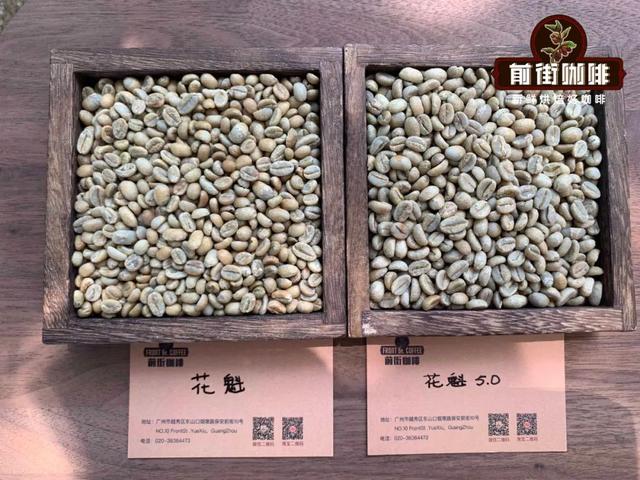
Qianjie roasted after getting Sakuran 5.0 and compared it with small-grained Sakuran coffee. Through the cup test, Qianjie found that the small Huakui coffee beans have deeper and stronger strawberry aromas and berry sweetness, while the 21-year-old Huakui 5.0 coffee is more active and brighter sour.
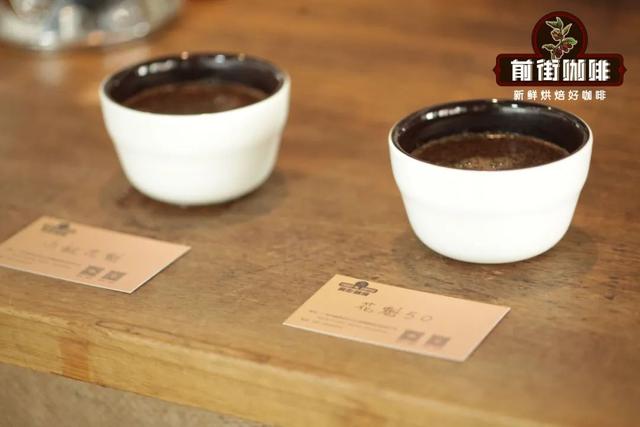
Baking record of 5 Huakui coffee beans in Qianjie Coffee
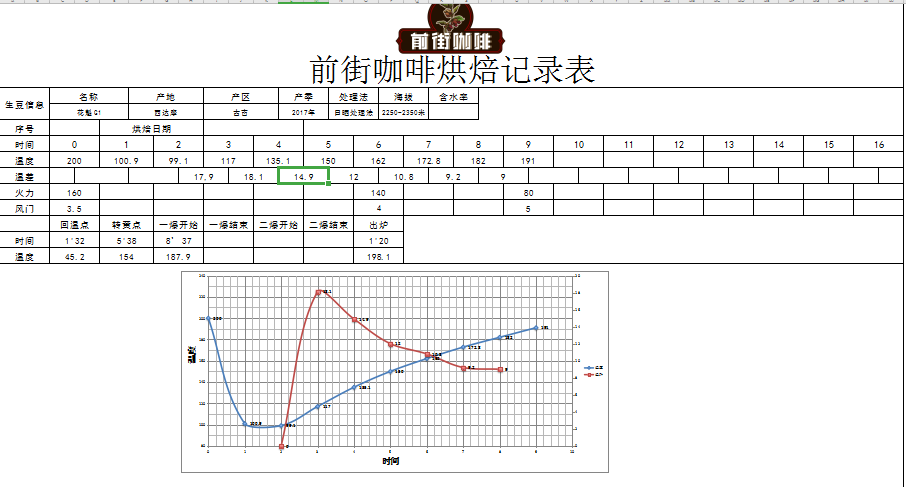
Qianjie Coffee Huakui G1 baking curve: Yangjia 800N, bean dosage 480g: furnace temperature to 160 degrees Celsius into the pot, throttle 3.5, firepower 160, temperature recovery point 1 "39" 32 "; 5: 38" when the temperature is 154 °C, the bean table turns yellow, the smell of grass disappears completely, and the dehydration is complete. When the bean surface appears ugly wrinkles and black markings, the smell of toast obviously changes to the smell of coffee, which can be defined as a prelude to an explosion, it is necessary to listen carefully to the sound of an explosion point, when the sound of an explosion point begins to explode, the throttle is fully open, the firepower of 191oC is reduced to 80 degrees, the throttle is opened fully, and the development time of an explosion is 1x20 ", and put in the pot at 198.1 degrees.
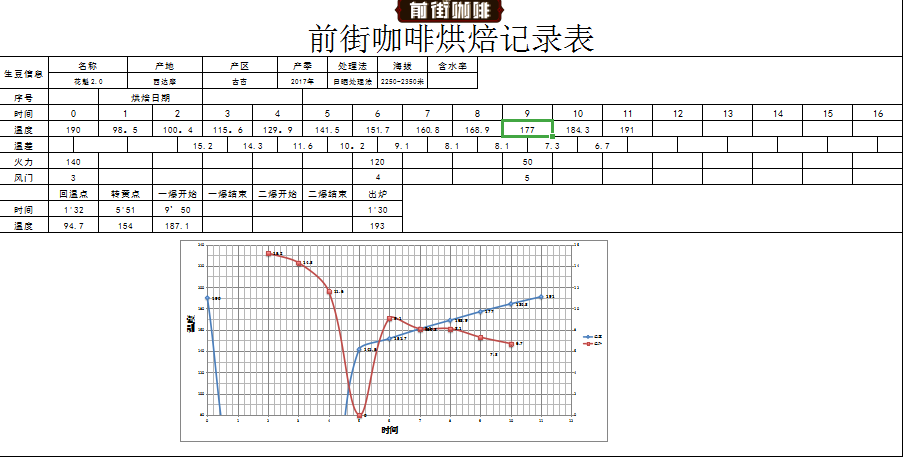
Qianjie Coffee Huakui 2.0 baking curve: Yangjia 800N, bean dosage 480g: stove temperature to 190 degrees Celsius into the pot, throttle open 3, firepower 140, temperature recovery point 1 "yellow" when the temperature is 154 °C, the smell of grass disappears completely and dehydration is completed. Furnace temperature 152 °C when the firepower dropped to 120, throttle opened 4, when the bean surface ugly Hu wrinkles and black markings, the smell of toast obviously changed to coffee, can be defined as a prelude to explosion, this time to listen carefully to the sound of an explosion point, to 9: 50 "the sound of an explosion, the throttle is fully open, 177 degrees firepower is reduced to 50, the throttle is opened 5, an explosion development time 1: 30", put the pot at 193 degrees.
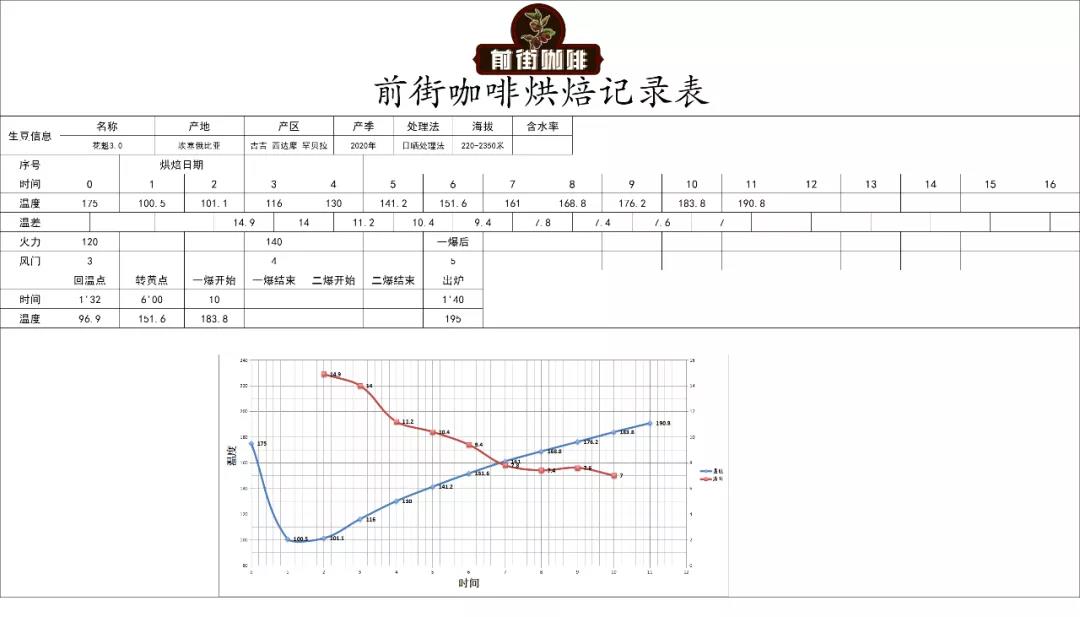
Qianjie Coffee Huakui 3.0 Roasting curve: Yangjia 800N, bean dosage 480g: furnace temperature to 175 ° C into the pot, damper open 3, fire 120, return temperature point 1 32";6 '00" temperature 152°C when the bean surface turns yellow, grass smell completely disappears, dehydration is complete. When the furnace temperature is 116°C, the fire rises to 140, the damper is opened 4, when the bean surface appears ugly beard wrinkles and black stripes, the toast taste obviously turns to coffee fragrance, which can be defined as the prelude to an explosion. At this time, you should clearly hear the sound of an explosion point, and start an explosion at 10 '00 ". The damper is fully open, and the development time of an explosion is 1' 40". The pan is placed at 195 ° C.
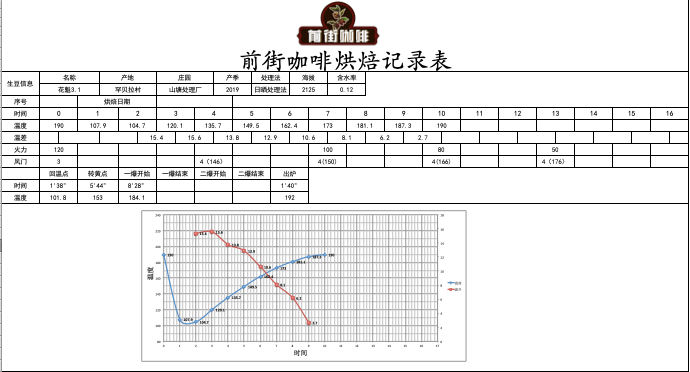
Qianjie Coffee Huakui 3.1 baking curve: Yangjia 800N, bean dosage 480g: furnace temperature to 190 degrees Celsius into the pot, throttle open 3, firepower 120, temperature recovery point 1 "yellow" when the temperature is 153 °C, the bean table turns yellow, the smell of grass disappears completely, and the dehydration is completed. When the temperature of the furnace rises to 1146, the throttle opens 4, when the bean surface appears ugly wrinkles and black markings, the smell of toast obviously changes to the smell of coffee, which can be defined as a prelude to explosion, this time to listen carefully to the sound of an explosion point, the sound of an explosion point begins to explode, the throttle is fully open, the firepower of 173degrees is reduced to 50 degrees, the throttle remains unchanged, the development time of an explosion is 1: 40 ", and put into the pot at 192 degrees.
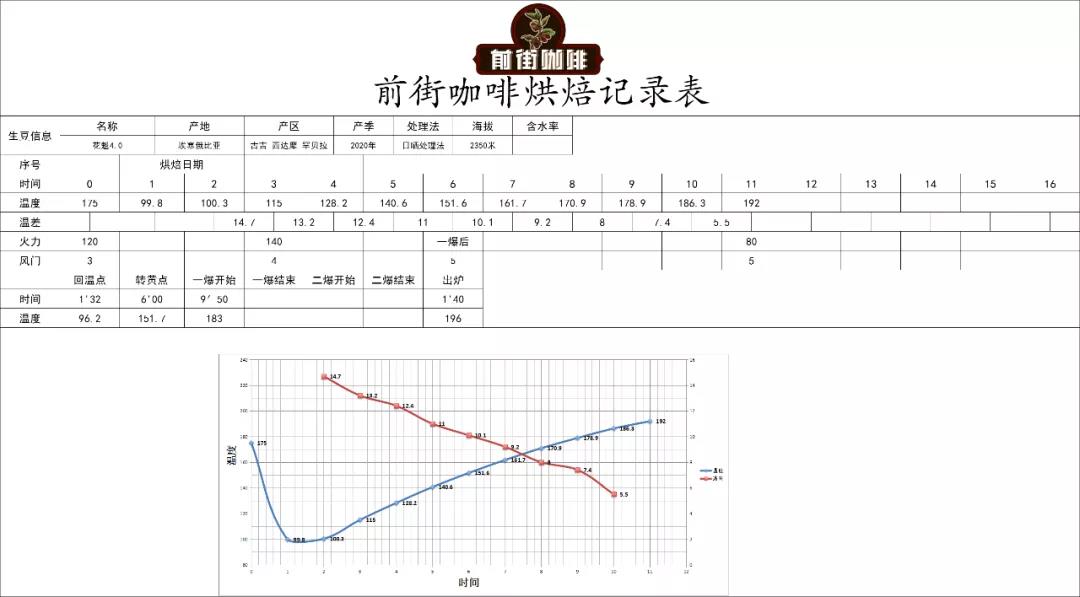
Qianjie Coffee Huakui 4.0 baking curve: Yang 800N, bean dosage 480g: furnace temperature to 175 degrees Celsius into the pot, throttle 3, firepower 120. Rise to 140 degrees, throttle open 4. Bake to 6: 00 ", the temperature is 151.7 degrees, the bean surface turns yellow, the smell of grass disappears completely, and the dehydration is completed. When the bean surface appears ugly Hu wrinkles and black markings, the smell of toast obviously changes to the smell of coffee, which can be defined as a prelude to an explosion. At this time, it is necessary to listen carefully to the sound of the explosion point, which starts to explode at 9: 50 ", the throttle is fully open, and the firepower of 188 degrees is reduced to 80." the development time of an explosion is 1: 40 ", put into the pot at 196 degrees.
Suggestion on brewing coffee in Qianjie
In order to fully extract the rich layered sense of Sakuran, the front street uses higher water temperature and finer grinding degree for extraction, but in order to avoid over-extraction caused by high temperature, faster flow rate filter cups such as V60 filter cups will be used. The V60 filter cup is in a 60 °cone shape, and the tapered angle allows the coffee powder to be distributed centrally, and when water is injected, the water can automatically converge to the center of the filter cup to ensure that the contact time between the water and the coffee powder is sufficient, so that the appropriate coffee liquid can be extracted. In addition, the ribs on the inside of the body of the V60 filter cup extend clockwise from the bottom to the top, so that there is enough space between the filter paper and the filter cup, so that the flow of water is good. Coupled with the large holes in the bottom, the flow velocity is relatively faster than that of many filter cups.
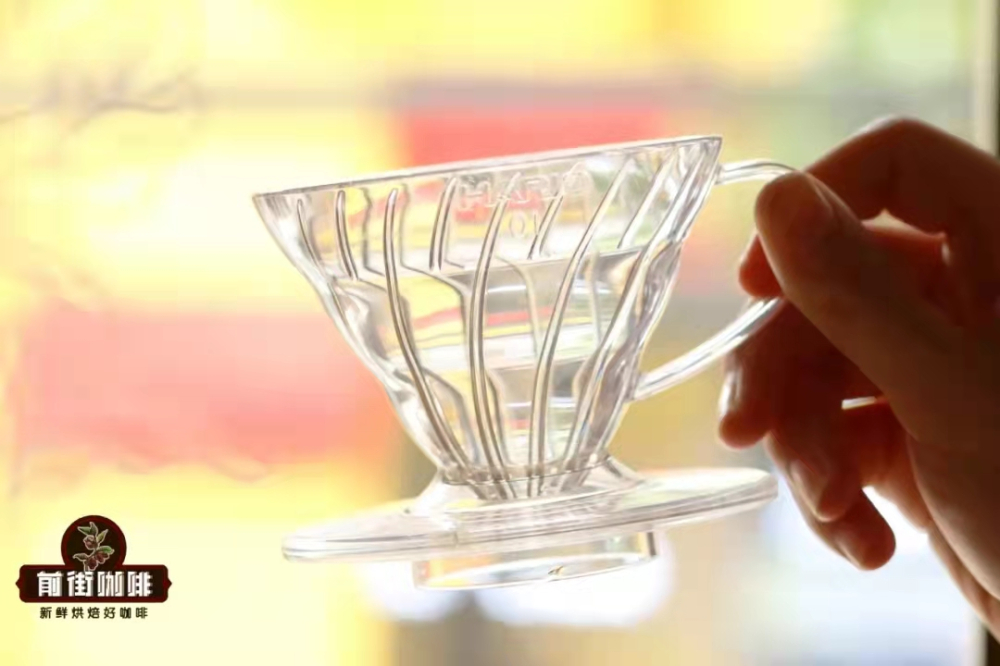
Qianjie recommends using freshly roasted coffee beans for brewing, so that you can maximize the rich flavor of the coffee. The coffee beans shipped in Qianjie are all roasted within 5 days, because Qianjie is well aware that the freshness of coffee beans has a great impact on the flavor. The purpose of Qianjie roasting is "freshly roasted coffee", so that every guest who places an order is the freshest coffee when he receives it. The bean cultivation period of coffee is about 4-7 days, so when the guest gets it, it is the time when the flavor is the best.
The specific cooking parameters used in Qianjie are: V60 filter cup, water temperature 90 ℃, water powder ratio 1:15, powder quantity 15g, medium fine grinding degree (China 20 standard screen pass rate 80%)
Qianjie coffee staged extraction: first, use 30g water to fully wet the powder layer in the shape of "hamburger" and steam for 30s; in the second stage, water is injected into 125g at 1: 00 "timer, then stop and wait for the water level to drop to 2 / 3 of the powder layer into the third stage; in the third stage, the water is injected into 225g when the timer is 390 / 40", and the total extraction time for coffee liquid to be completely dropped is 1 cup 3959 ". Shake the coffee gently after the extraction, and then taste it after the coffee liquid is fully uniform.
Description of cooking flavor
[Sakui G1] smooth, passion fruit, fermented wine, jackfruit, strawberry.
[Sakuran 2.0] the overall taste is clean, berry aromas will be more obvious, and with nutty aromas, the taste will be richer.
[Huakui 3.0] light strawberry jam, black tea, sweet aftertaste.
[Sakui 3.1] Flower, cream, tropical fruit, caramel, sweet and lasting.
[Huakui 4.0] citrus acid, berry juice fullness, lemon black tea, long-lasting sweetness.
[Sakui 5.0] Flower aroma, sweet and sour feelings of berries, citrus and plums, mango juice, honey, and sweet aftertaste of black tea.
[Xiaogui] sweet aroma of berries, creamy strawberries, passion fruits, rich sweetness and full taste.
For more boutique coffee beans, please add private Qianjie coffee on Wechat. WeChat account: kaixinguoguo0925
Important Notice :
前街咖啡 FrontStreet Coffee has moved to new addredd:
FrontStreet Coffee Address: 315,Donghua East Road,GuangZhou
Tel:020 38364473
- Prev
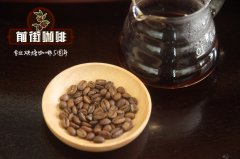
How to make the best Ethiopian Sakui coffee? How much is a cup of coffee?
Professional coffee knowledge exchange more coffee bean information please pay attention to the coffee workshop (Wechat official account cafe_style) oil to coffee, there is sweetness, taste, mellow aroma. There must be fat, or it may have the same amount of lactose as a cup of skim milk, but there is a considerable difference in sweetness between nonfat and full fat. But the other thing is certain
- Next
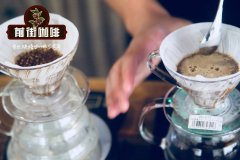
What kind of utensils are suitable for brewing Humbera Coffee beans? description of the characteristics and flavor of Hambela Huakui 6.0 coffee story
Professional Coffee knowledge Exchange for more information on coffee beans, please refer to the coffee workshop (Wechat official account cafe_style) EthiopianSidamoShakissoNatural Sakui Coffee beans 01 | brief introduction of Sakui Coffee Bean producing areas Hambella.
Related
- Detailed explanation of Jadeite planting Land in Panamanian Jadeite Manor introduction to the grading system of Jadeite competitive bidding, Red bid, Green bid and Rose Summer
- Story of Coffee planting in Brenka region of Costa Rica Stonehenge Manor anaerobic heavy honey treatment of flavor mouth
- What's on the barrel of Blue Mountain Coffee beans?
- Can American coffee also pull flowers? How to use hot American style to pull out a good-looking pattern?
- Can you make a cold extract with coffee beans? What is the right proportion for cold-extracted coffee formula?
- Indonesian PWN Gold Mandrine Coffee Origin Features Flavor How to Chong? Mandolin coffee is American.
- A brief introduction to the flavor characteristics of Brazilian yellow bourbon coffee beans
- What is the effect of different water quality on the flavor of cold-extracted coffee? What kind of water is best for brewing coffee?
- Why do you think of Rose Summer whenever you mention Panamanian coffee?
- Introduction to the characteristics of authentic blue mountain coffee bean producing areas? What is the CIB Coffee Authority in Jamaica?

